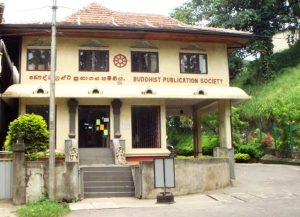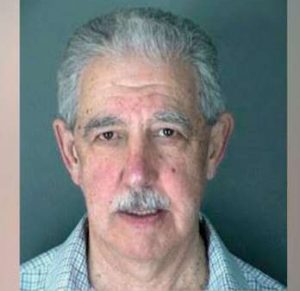
Shugendo Now – An Interview with the maker
Shugendo Now is a documentary that tells the story of people who are living in present-day Japan. Yet, at the same time, it is also the story of the Shugendo tradition that reaches back into the mists of legend.
In the summer of 2007, filmmaker Jean-Marc Abela and researcher and academic Mark Patrick McGuire, both from Canada, spent six weeks with different groups of Shugenja (followers of Shugendo) on the Kii Peninsula of Japan. First Abela and McGuire accompanied these Shugenja on their annual pilgrimage in the mountains of Kumano and Yoshino. Later they met them again in their homes and at their places of work in the busy and crowded cities of Osaka and Tokyo.
When I watched Shugendo Now in the spring of 2010, I did not yet realize that this documentary was one of the trails that would become part of my own Shugendo journey. At first, my curiosity as a writer was sparked and I wanted to talk with Mark about the production of this documentary.
I had visited the Kumano area of Japan the year before and walked the Kumano Kodo pilgrimage trails and also visited Yoshinoyama. These visits sparked my interest in Shugendo. I searched for English-language information because I wanted to write an article about Shugendo. This is when I came across Shugendo Now.
My conversation with McGuire lasted for two hours, and at the end he suggested that I meet the protagonist of the documentary: Kosho Tateishi, a mountain ascetic monk based in Kumano. Two months later, on my next visit to Kumano, I met Kosho-san. This is where my Shugendo journey began. I quit my job and moved out of Tokyo to Kumano in July 2011. I took up Shugendo training and Kosho-san became my first Shugendo teacher.
The following article is a summary of my questions and McGuire’s answers from 10 years ago. Reading through them again, I realize how relevant they remain today, if not more so, for our way into the future.
Buddhistdoor Global: What is the essence of Shugendo?
Mark Patrick McGuire: Shugendo is an ancient tradition unique to Japan. The practitioners, called Shugenja, read teachings and perform rituals from Shinto, Taoism, tantric Buddhism, and Shamanism. The true essence of their training, however, lies in walking in nature on mountains that are considered sacred. Through their spiritual experiences on these treks they hope to gain power.
This power lies in internalizing the understanding that man is part of nature and of the universe at large. It is acquired through rigorous training and testing the body and heart rather than understood by the mind only. This might sound quite philosophical or sort of other-worldly and out of reach to the average person. However, Shugenja walk on real mountain paths, they experience real sensations through all their senses and, above all, they are real people coming from all walks of life.
BDG: What do people seek in the mountains?
MPM: There are many different reasons why people go to the mountains and participate in a pilgrimage. Some are depressed or have lost direction in life and they are looking for change or for solutions. For example, there is one guy who worked his whole life until retirement as a company employee and so he had never cultivated any hobbies or a relationship with his family. Now suddenly he’s got all the time in the world. What is he going to do with it?
There are other people who have everything but have lost their appreciation for what they have. We met one gentleman from Osaka. Only in his mid 30s, he runs a successful business, has two beautiful children, and a solid relationship with a beautiful and loving wife. In short, he’s got pretty much everything he could want. We asked him: “Why do you go to the mountains?”
“It is precisely because I have all these things and because I am successful,” he told us. “One becomes complacent and does not appreciate things anymore. Doing a pilgrimage reduces my being to a couple of rice balls in my pocket, a simple pair of tabi [socks] and a walking stick. It is just with my body that I can accomplish something. This is a cleansing of the senses similar to a cleansing of the palate by eating ginger in between eating sushi.”

BDG: Is Shugendo Now contributing to the revival of Shugendo?
MPM: Shugendo is essentially an esoteric tradition and some teachings are only disclosed to the initiated. This tradition became illegal during the Meiji period, when a policy (haibutsu kisshaku) was established to forcefully separate the kami from buddhas, which had previously been intermingled freely. Priests had to decide whether to affiliate with an Imperial Shinto shrine or with a Buddhist temple. Given this history, practitioners became cautious.
Now they feel that there is a need to revive the tradition and that this endeavor needs the strength of the broadest members of society, including foreigners. This documentary is an account of the making, or remaking, of an ancient tradition and its revival and survival in post-modern Japan of the 21st century.
When we filmed in Japan, there were lots of people who generously welcomed us into their homes and work places. They were keen to share with us what these Shugendo experiences mean to them. Above all, they also wanted to share this with a global audience, knowing that we made this film which would potentially play on TV or at film festivals. I think making this documentary is what opened doors for us.
That the Shugenja gave us access to their interior and let us observe and document their personal practices in this beautiful place of Kumano has become a way for making connections with people around the world and from all walks of life.
It is incredible, but every day I receive emails from people around the world. They watched the documentary and then they write to me about themselves. For example, they say: “I am stuck in this cubicle as a lawyer in Melbourne. I watched the documentary and then looked up Shugendo and Kumano. You gave me permission to explore a part of myself that I normally keep very much shut off.”
BDG: How is Shugendo relevant in our world now?
MPM: The stories portrayed in our documentary speak to people who do creative work or work with children; people who work in agriculture or in sustainable businesses; teachers, scholars, city planners. They all find some answers and inspiration for what they are doing.
There is also a great interest from people involved in various sorts of healing practices who realize that going into nature, into the mountains, can be a kind of healing practice too. They say: “Maybe I will encourage my patients to not only do acupuncture and reiki but also to go to the mountains.”
I have a piece of calligraphy that Tateishi Kosho, the Shugendo priest portrayed in the film, made for me. It says: “From mountain practice to city practice” or “from mountain austerities to city austerities.” This is a Shugendo teaching.
We have only this short time in the mountains doing a pilgrimage or a retreat, which is a great gift. Most of the time, however, we spend in cities. Like the calligraphy teaches me, I am trying to bring my experiences from the mountains to the city.
Are mountains and cities two entirely different habitats or are they two aspects of the same universe? Can we experience the wholeness that we feel in nature and in the mountains in the concrete and chaos of modern cities? What can participation in a mountain pilgrimage bring to our city lives? These were the questions that I tried to address and answer with this documentary.
BDG: What can modern-day people learn from this ancient tradition?
MPM: For me it is about patience and calmness; the great gentleness of a breeze or of a river flowing. When I am with my daughter and she has a temper tantrum and she is crying, something is not working and I feel a sense of frustration is building up inside me, I think about the sensory experiences of being in the mountains and walking there with people. It makes me, in a very literal way, want to apply this sense of gentleness, patience, and calmness to my daily life.
Many Japanese traditions have crossed the seas to become popular on foreign shores. This was the case for the martial arts of aikido and karate, the healing practices of reiki and shiatsu, for taiko drumming and many other so-called “ways,” like the tea ceremony and calligraphy, to name just a few. Could Shugendo, the “Way of Acquiring Power,” be one of them?

For more information about Shugendo and about Shugendo Now, visit: www.shugendonow.com
Related features from BDG
Connecting the Past and Present of Shugendo – The Revival of Japan’s Ancient Mountain Ascetic Tradition, Part One
Connecting the Past and Present of Shugendo – The Revival of Japan’s Ancient Mountain Ascetic Tradition, Part Two
Connecting the Past and Present of Shugendo – The Revival of Japan’s Ancient Mountain Ascetic Tradition, Part Three
Connecting the Past and Present of Shugendo – The Revival of Japan’s Ancient Mountain Ascetic Tradition, Part Four
Connecting the Past and Present of Shugendo – The Revival of Japan’s Ancient Mountain Ascetic Tradition, Part Five
Connecting the Past and Present of Shugendo – The Revival of Japan’s Ancient Mountain Ascetic Tradition, Part Six












